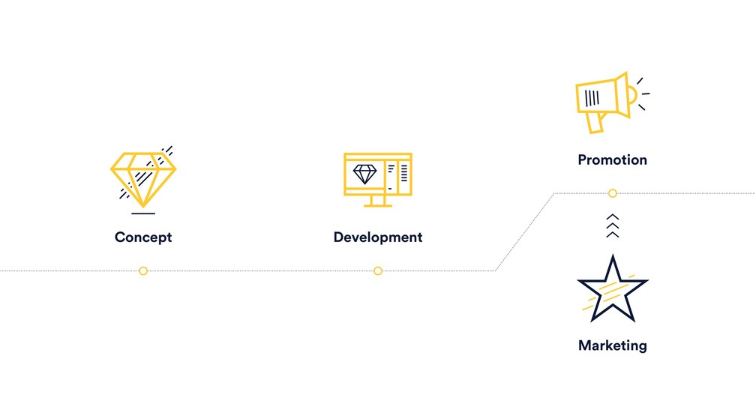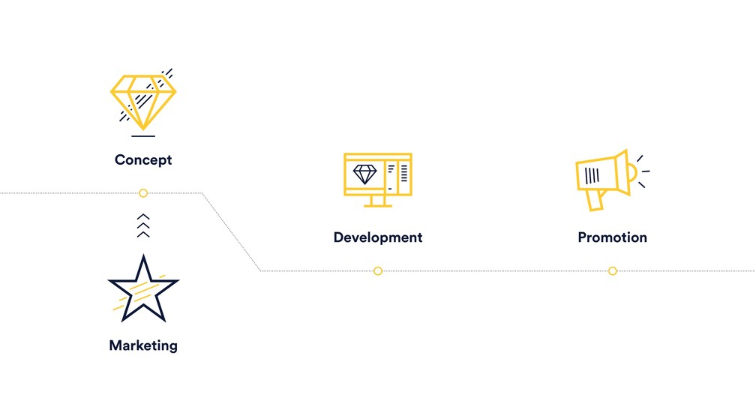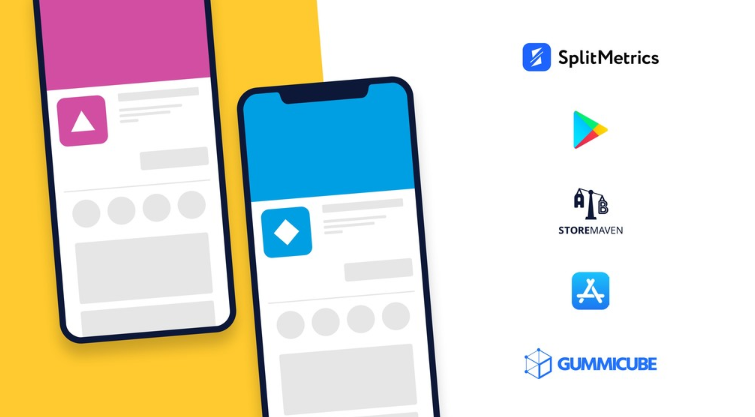Anastasia Selchuk from Pixonic told whether it is possible to find out how the audience will meet her before the release of the game (and even at the pre-production stage).
Anastasia’s report was first read at White Nights St. Petersburg 2018. We present a short printed version.

Anastasia Selchuk Disposition
The article is devoted to how you can conduct tests and use them to predict the success of the game.
I use the word “forecast” in the title of the topic with some caution. Humanity has not yet figured out how to look into the future, to find out what will happen there.
Even in such seemingly studied areas as weather forecasting, mistakes happen all the time. I am sure that everyone has faced a situation when you look at the weather forecast in the morning, there is a cloudless sky, you do not take an umbrella. And the same day you get somewhere under a tropical downpour. If such mistakes can happen with the weather forecast, then what can we say about predicting human behavior, his reaction to something.
At the same time, the success of any commercial project is based on a forecast, on predicting how the product will be received by the public.
The success of the project, if we simplify it very much, is twofold. On the one hand, it is the quality of the product that you directly influence. On the other hand, it’s how people perceive what you do, how much they like it. Unfortunately, it is quite difficult to influence this directly.
Let’s focus on the second aspect.
Often, working with marketing looks like this: a developer brings a project to a marketer and says: “We need to pour traffic.” It is often called that way.

Marketing is often attracted already at the final stage
The problem is that even at this stage (when the game is ready) it is not always clear what audience it is for.
This does not mean that the team made mistakes, that it did not choose the target audience in advance. It’s just not always an obvious point. Plus, the marketer does not sell the game as a level system or a design document, he sells the image, the feeling of the game.
Why is it important to remember this?
It is the image, the feeling that the user buys when faced with an advertisement (with a video, with a banner or something else). The successful sale of this image is measured by a set of indicators: the cost of installation, conversion, the size of the target audience and its coverage. They describe two very simple things: how much users like the project (its image) and how many people like the project.
The main task of marketing is to answer them as quickly as possible during the release, in order to immediately understand where to get this target audience, how to attract it, how to package the project so that she likes it, and so on.
Very often, this is quite a stressful period for both the team and the project. Many expect the project to be a quick success. People like what they do. They think that everyone around them will appreciate it too.
In fact, this is a period of fairly long tests, sorting through various options. And this is normal, because there are a lot of games, the competition is huge, you need to find your niche.
Study
Now — a surprise. You can answer these questions not only after the launch. It is possible to get answers much in advance, even at the concept stage, when there is no product, there is no gameplay.

You can also connect marketing at the stage of working with the conceptHow to do it?
The secret is to show the audience your idea, somehow visualizing it, and measure the reaction. Take a closer look at the same conversion, measure the coverage, and so on. You don’t need a build at all for this.
Very often, you can make quite plausible banners or screenshots “out of dirt and sticks”, from what is there. Take something from old projects, sketch something quickly in Photoshop, some concept art.
Users don’t expect a perfect picture in an ad. They click, among other things, on any game that you, as a marketer or as a producer, will generally find unattractive to the audience.
Conversions based on the received art should not always be compared with projects that actually exist, but in any case they can give a lot in terms of understanding the audience.
How does it work?
For example, you use Facebook, show advertising banners that you have made for these tests. Banners may not lead anywhere at all, only collect clicks, or they may lead to a fake store page that can be created using various services. The fake page will look the same as the app page in the App Store or Google Play. It just won’t open in one store or another, but in the browser. Many users will not notice the substitution.

Services that allow you to make test pages
You can upload any materials to the page: an icon, a description, any company name, games — anything.
And with its help, the user will get the fullest possible understanding of what idea you have, what concept, what you want to do.
Important: You don’t need to tell the user that this game doesn’t exist yet. You are conducting marketing research. You are not just analyzing the market, you are analyzing and testing your hypotheses. This is not just an A/B test, it is a test of a potential project on a real audience, on specific figures.
For example, you have an idea. You want to make a farm about aliens with elements of strategy. Are you aware that the audience of farms is women 35+, and men are primarily interested in fiction. And you can make several sets of creatives to check if this is the case and whether users will respond better to lion cubs instead of green men.
In other words, you make a couple of page variations. In one there are aliens, in the other there are lions instead of them. Then you launch campaigns and see what the audience responds to better.
Unfortunately, paid traffic will also have to be driven to fake pages to measure indicators. I recommend using Facebook because it has the widest audience targeting and segmentation capabilities. You can, for example, check the conversion of not all mobile players in general, but specifically your target audience.
If you have some piece of gameplay, some demo, then you can cut a video, make text bets and check the positioning of the game, which also greatly affects the positioning of the project.
It is also possible to check different target audiences. For example, you only want to make farms about aliens. This is your dream project. In this case, you can check which audience will respond to this concept better and, accordingly, measure the approximate reach of this audience, understand which audience you can count on.
Rules for conducting research
The first rule is to have a hypothesis. It is very important that your actions come from a hypothesis. You can’t draw something, look at the metrics and then try to figure out what it might say.
The second rule is to test one hypothesis through one element. This is the only way to get an answer to your question. For example, you want to check the setting. You show a girl in the forest on one banner, and a boy in the mountains on the other. At the end of the test, you will not be able to give an answer. You won’t understand if the background or the character was affected. It is important that there is always some one element that you are checking.
The third rule: for correct conclusions, the data must be correctly collected. This is usually about sampling. When working on it, it is important to exclude factors that at the moment may distort the real interest of the audience in the product. There are many such factors. They can be sports competitions, the release of a blockbuster movie and so on, so on. It’s important to cut it all off.
***
There are a lot of things that can be tested. Not all of them, of course. However, with the help of the practices that I have touched on, it is possible.

Examples of what can be tested using the mentioned approaches
And thanks to this, you can try to increase the chances of popularity with the audience.
To do this, there is absolutely no need to wait for the release, you can find out something for yourself at the start of work.
